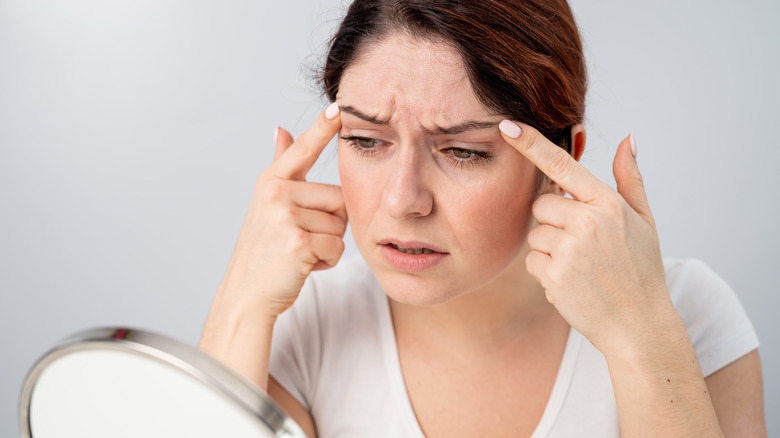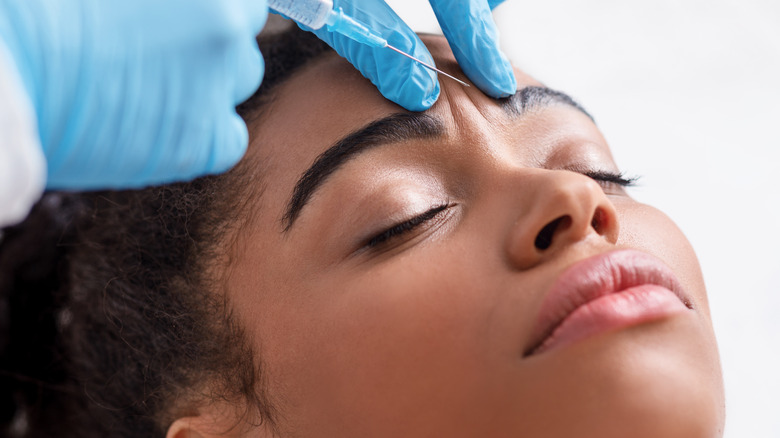Will Botox Actually Increase Your Wrinkles After It Wears Off?
Botox injections can be used to treat a wide range of health conditions from migraines, to foot pain, eyelid muscle spasms, digestive problems, and even an overactive bladder (via Penn Medicine). Most noted for its ability to reduce signs of aging by minimizing wrinkles, the popularity of Botox has risen in recent years, making it the most in-demand cosmetic procedure in the U.S.
Usually performed in a physician's office, a needle is used to inject small doses of a toxin known as botulinum into the targeted area of the body (via the Mayo Clinic). The toxin stops the muscles from contracting, so facial areas prone to wrinkles such as the forehead can relax. Following the procedure, the effects can usually be seen within one to three days and generally last for a period of at least three months. However, additional injections will eventually be required in order to maintain its appearance. As Botox wears off, is it possible that even more wrinkles can set in than you had before?
"When people see lines forming after Botox wears off, they assume treatment made their wrinkles worse," writes board-certified internal medicine doctor Dr. Dale Prokupek via Aesthetic Body Solutions. "Actually, your face simply returns back to its natural state. No new wrinkles or lines are ever caused by these injections." How exactly does this occur?
How to maintain the appearance of Botox for longer
Westlake Dermatology explains that the botulinum used in Botox injections is eventually broken down by the body over time, leading to the reappearance of wrinkles. However, there are ways in which people can help preserve the effects of Botox for longer periods of time.
As per Westlake Dermatology, be sure to avoid any rubbing of the face immediately following the procedure. Instead, doing some light facial stretches can help the botulinum evenly spread throughout the area and extend the results. These exercises include mouth movements, such as alternating between frowning and smiling (via BH Skin Dermatology). Additionally, maintaining a healthy diet, moisturizing regularly, avoiding ultraviolet light, and drinking plenty of water may also lengthen the effects of Botox. Not only that, but some research shows that taking zinc supplements may also help maintain its appearance.
Overall, the best way to help keep the return of wrinkles at bay following a Botox procedure is to regularly visit your dermatologist for follow-up injections, according to BH Skin Dermatology. However, scheduling follow-ups too often can actually have the opposite outcome and Botox may eventually become less effective. The average suggested period between injections is around 12 weeks, but be sure to follow the specific instructions of your doctor.


